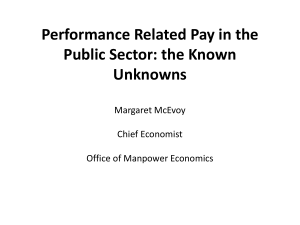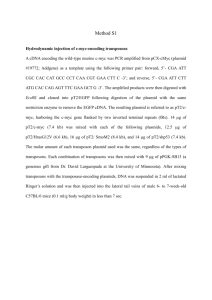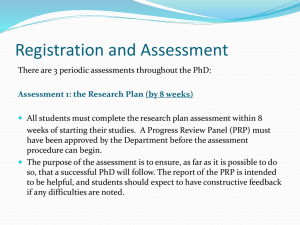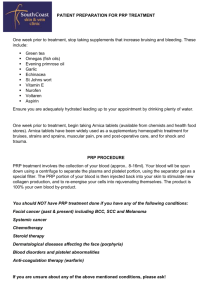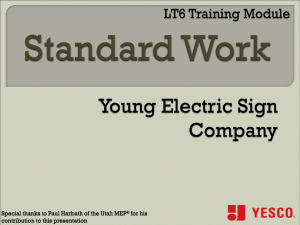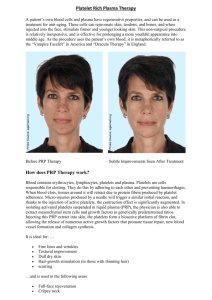Arab Open University (Bahrain Branch)
advertisement
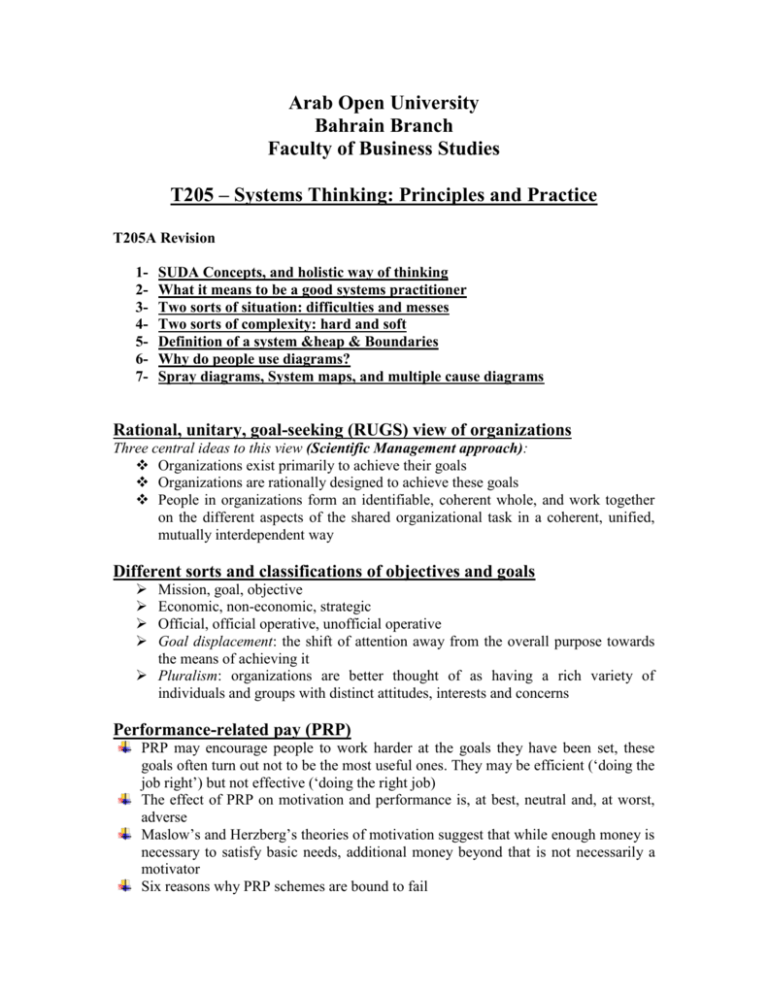
Arab Open University Bahrain Branch Faculty of Business Studies T205 – Systems Thinking: Principles and Practice T205A Revision 1234567- SUDA Concepts, and holistic way of thinking What it means to be a good systems practitioner Two sorts of situation: difficulties and messes Two sorts of complexity: hard and soft Definition of a system &heap & Boundaries Why do people use diagrams? Spray diagrams, System maps, and multiple cause diagrams Rational, unitary, goal-seeking (RUGS) view of organizations Three central ideas to this view (Scientific Management approach): Organizations exist primarily to achieve their goals Organizations are rationally designed to achieve these goals People in organizations form an identifiable, coherent whole, and work together on the different aspects of the shared organizational task in a coherent, unified, mutually interdependent way Different sorts and classifications of objectives and goals Mission, goal, objective Economic, non-economic, strategic Official, official operative, unofficial operative Goal displacement: the shift of attention away from the overall purpose towards the means of achieving it Pluralism: organizations are better thought of as having a rich variety of individuals and groups with distinct attitudes, interests and concerns Performance-related pay (PRP) PRP may encourage people to work harder at the goals they have been set, these goals often turn out not to be the most useful ones. They may be efficient (‘doing the job right’) but not effective (‘doing the right job) The effect of PRP on motivation and performance is, at best, neutral and, at worst, adverse Maslow’s and Herzberg’s theories of motivation suggest that while enough money is necessary to satisfy basic needs, additional money beyond that is not necessarily a motivator Six reasons why PRP schemes are bound to fail Pay is not a motivator Rewards are a covert form of punishment Rewards disrupt teamwork Other things affect performance PRP discourages risk-taking Rewards undermine interest The use of PRP becomes self-sustaining, because it damages longer-term performance but produces short-term gain Put in more ‘Systems’ way, PRP treats the problem of motivation as a difficulty: ‘Employees are motivated by pay so their performance will improve if we offer them pay related to their performance’. But motivation and performance are clearly much messier than this simple approach can address. As is usual with messes, they only get worse if they are treated as if they are difficulties fundamental belief in pay as motivator employees’ temporary compliance some employees get rewards managers’ belief in PRP jealousy, bitterness, rivalry reduced intrinsic motivation declining employee performance use of increased PRP incentives Performance-related pay: the long-term prospects 2 Unintended consequences: The ‘job description’ story The research into role conflict and role ambiguity strongly reinforced the need for clearly specified roles within organizations. This led to the practice of devising formal ‘job descriptions’ The more precise the job description became, the less freedom the employer had to change the content of the work. Managers had begun to see written job descriptions as a two-edged sword, giving as much control to the employee as to the employer Job descriptions were also static documents. Any changes in work methods, priorities or the scope of activity called for renegotiation, revision and rewriting In recent years, job descriptions have become less precise and are no longer compulsory. Both employees and employers now expect employment to be much more flexible, within a concept of ‘ongoing career development’ Organizations at any point are the outcome of complex processes, not simply the embodiment of rational plans for achieving desired ends From ‘scientific management’ to personal empowerment Two key principles lying behind the work of Taylor and Gilbreth Each job is broken down into simpler component tasks, with detailed specifications of how each task is to be accomplished and how long it should take to complete. This spawned the specialist area known as ‘work study’ Planning work becomes completely separated from doing work. This spawned the area often called ‘O&M’ (organization and methods) Taylor and Gilbreth’s approach involved three methods of control o Planning o Linking the individual worker’s pay to his or her productivity o Adjusting the speeds or capabilities of the machines to control the work of those whose jobs are linked to them Drawbacks of Taylorism Downplays the human aspects of work Forms of reaction, resistance and ‘spanners in the works’ may occur Result in a mindless, unquestioning bureaucracy with strict adherence to standards and rules, stifling creativity and flexibility Prevent input from employees about improvement or innovation, leading to organizations that can’t manage uncertainty and change Alternative approaches The larger the overlap between the individual’s, and organization’s goals, the larger the possibility that the individual will work for the organization as a volunteer 3 Organization’s goals Area where formal controls provide incentive Individual’s goals Area of congruence Overlap between individual and organizational goals The continuum of control mechanism: At the extreme left is tight formal control by direct supervision and correction of every action. At the extreme right is total independence. In between lie: Standardization of the work process (e.g. tight specifications of the tools and the way that the task is to be done, as in scientific management) Standardization of the outputs (where targets for outputs are set but the means of achieving them are left to the individual or work group) Standardization of skills (where the organization selects only those people who have been trained in a particular way, or provides in-house training, and then relies on these people to use their training to judge the best way of achieving organizational goals) Independence, subject to negotiation and mutual adjustment with colleagues 4 direct supervision standardized processes DECREASING FORMAL CONTROL standardized outputs control standardized skills mutual adjustments total independence autonomy The continuum of control mechanisms The following six sections look at a series of alternatives to scientific management, which illustrate a gradual progression from left to right in the continuum of control mechanism: Direct supervision: early experiences of job redesign To increase productivity To cut the volume of work in progress To increase the flexibility of production department Note: giving some autonomy to work groups & enabling them to take responsibility for a whole process can in effect improve morale and increase productivity & job satisfaction Standardized processes: job enlargement The simpler form of job redesign By increasing the number & variety of the operations each person or group is required to do By rotating people through 3 or 4 separate but similar tasks in a day Reduced stress & increased output but temporarily Standardized outputs: job enrichment More radical form of job redesign To give people more jobs of the same kind To give more discretion over how & when to work a whole series of tasks 5 Is represented by the shifting from standardization of processes towards the standardization of outputs Extra tasks are often done by skilled & responsible people by those higher up in the organizational structure Control exercised via shared goals rather than via imposed practices Organization should take attention to secure staff commitment to organizational goals Standardized skills: semi-autonomous work groups To achieve job enrichment by the development of semi-autonomous work groups Workforce should accept greater levels of responsibility Work-group manager’s role changed from supervision & control to leadership, encouraging, enabling, acting as a channel for information between the work group & other part of the organization Mutual adjustments: team working Is one way of giving greater freedom of action to people who possess a great level of skills, without the risk of a loss of control It cuts across existing structures & lines of control Involves skilled people or expertise from a number of different departments to work on a specific project Main purpose of setting such a project is to tackle a pressing organizational issue with a team provided with overall objectives & given the responsibility for choosing the best option to achieve the goal. Is the creative stimulus of discussion between people with different perspectives from different areas Remains too long together to become an established group with its own particular perspective & way of working to achieve their initial objective Giving greater freedom of action to individuals creates some risks of loss of control to the organization as a whole. becoming specialized to respond quickly & adapt easily if organizational goals change Control is achieved by standardization of skills, by negotiation & mutual adjustment Skunk works team: Skunk works team is a radical form of team working designed to encourage entrepreneurs & innovative ideas in large companies where normal structure doesn’t support creativity A small group of unconventional imaginative people drawn from any part of the structure grouped together given a challenge that stimulates & excites them & allowed total freedom to do what they want to come up with solutions Formal controls of the group are minimal Control is enforced by keeping the size of the group small, by restricting their work to crucial problems, and by insuring frequent and informal communication with top-management. Total independence: splitting off altogether 6 There is total independence Workgroup is autonomous (no longer part of parent company) Has the freedom of the team or skunk works Has lost security & support of belonging Has acquired ultimate responsibility for its own survival Old in house was simply split off Large companies began to get rid of all non-core activities preferring to buy at competitive rates from external suppliers rather than have them in house Mutual causation Mutual causation occurs whenever one variable, A, affects another variable, B, and is in turn affected by B. A B A simple causation B mutual causation Two types of causation Negative feedback: Can be ‘good’ as a self-stabilizing mechanism for helping a system survive in a changing environment Can be ‘bad’ when you want to change a system, and you find that it has built-in self-stabilizing mechanisms that make it resist your efforts Positive feedback: Can be ‘bad’ when it is a ‘vicious circle’ as when one failure triggers further failures (spiraling out of control) Can be ‘good’ when ‘success breads success’ List of readings and resources: 1. Concept file 4 (Organizations): - Introduction to Section I - Readings 1, 2, 3, 4, 5, 6, 7, 13, 36 & 37 7 EXAM QUESTIONS QUESTION 1 – Estimated Time 40 minutes Managing organizations is changing. Over the years the interest in externally imposed control has diminished in favor of autonomy and empowerment (a form of internally imposed control). This change in organizations reflects a trend aimed at empowering employees to accept and embrace changes in their current business environment. The purpose is to transform individuals, teams, and organizations from a current (undesirable) conditions to a more (desired) future state. Discuss how managing within organizations ahs changed by explaining the principles of the scientific management approach, and comparing them to those of the alternative approaches of job redesign. Indicate how organizational control is changing with each of the new forms of job redesign (25 marks). QUESTION 2 (30 marks) There are different approaches for managing organizations A- Describe what is meant by RUGS view of organizations? (10 marks) B- Discuss the main difference between a RUGS view of organization and system view of organizations? (10 marks) C- Taking organizational management as your system of interest, draw a system map diagram to show the components of these two approaches. Pay attention to the grouping and the hierarchy (10 marks) Question Three (25 marks; Estimated Time: 20 minutes): To be effective organizations need to have a high degree of coherence in their activities. The way for achieving this efficiency has changed over the years. Briefly list the principles of the scientific management approach and discuss the new approaches which emerged as an alternative (job enlargement, and job enrichment). (25 marks) 8
